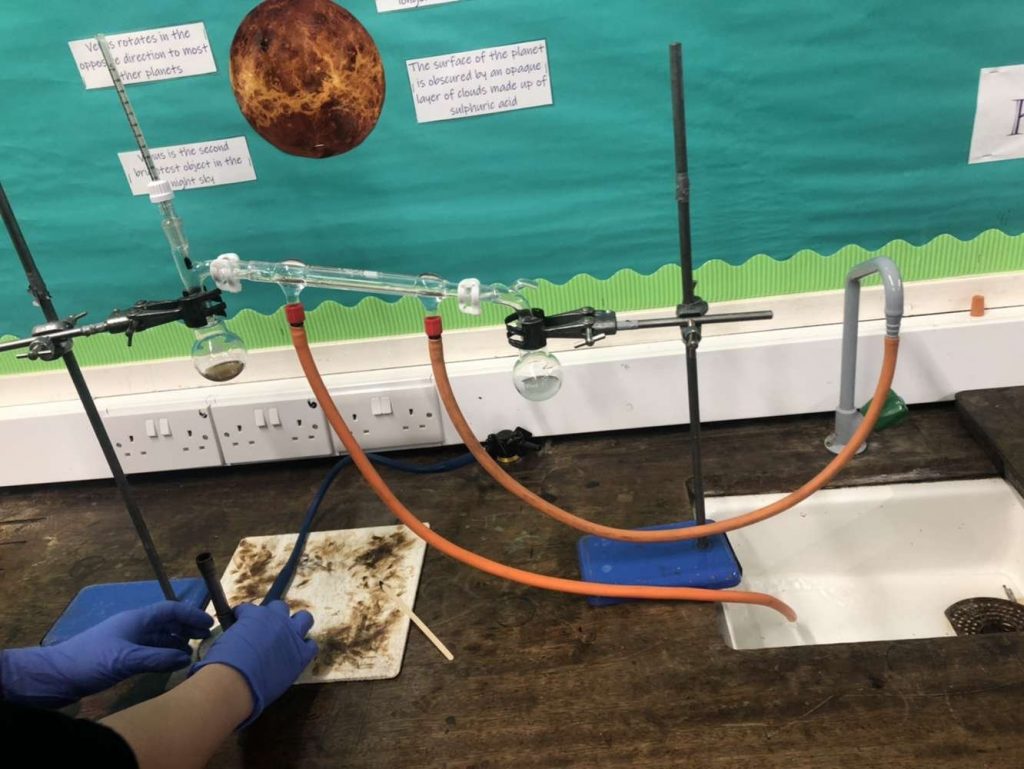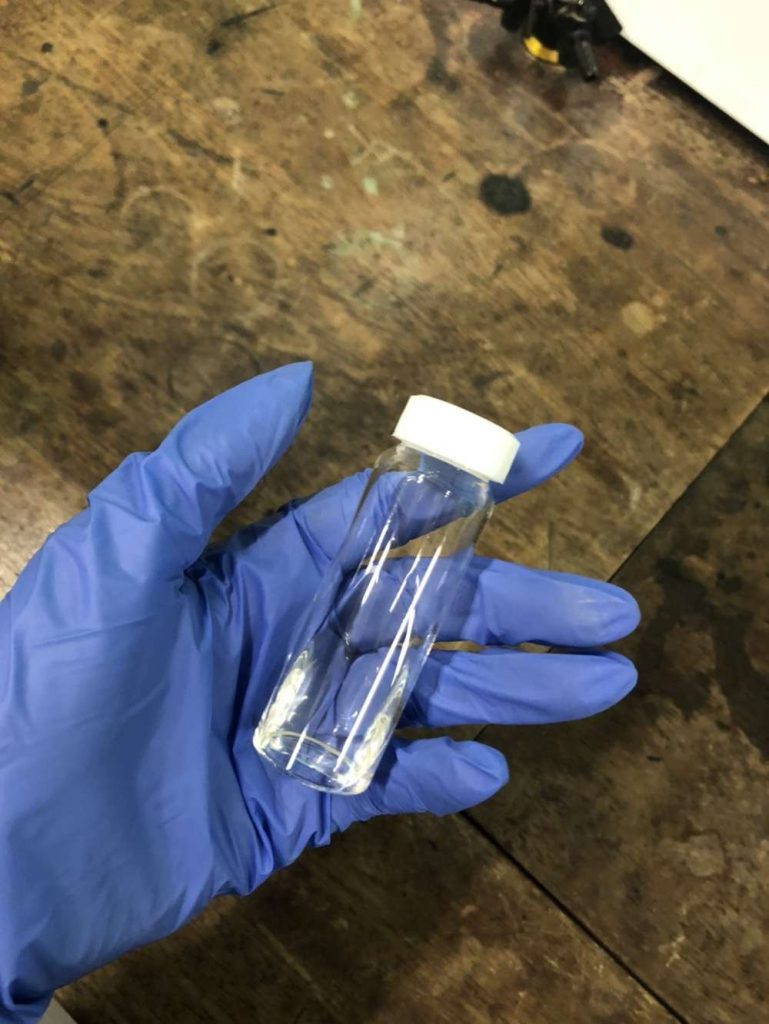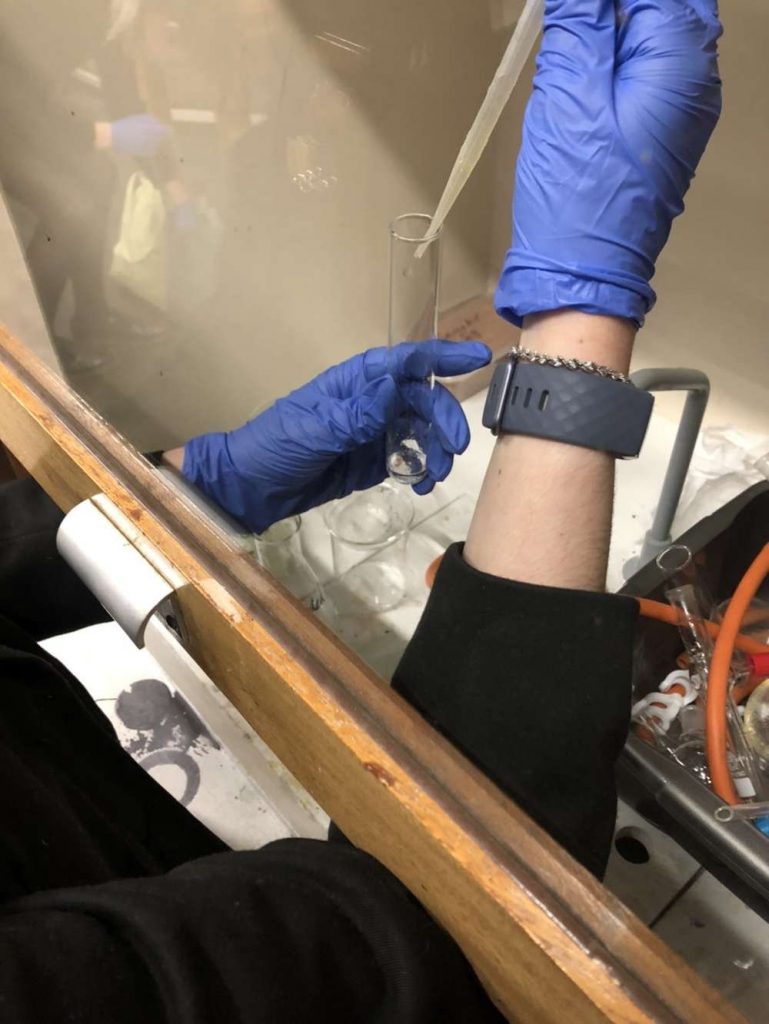A while back in A level Chemistry we have been completing a practical on preparing a cyclohexane. Today’s blog post I will show the practical instructions with photos of our set ups and final product. This is to celebrate the ending of British Science Week 2020!
Part 1: preparation

- Add 10cm3 of cyclohexane to a small round bottom or pear-shaped flask (CARE: don’t get it on your skin. Don’t inhale it. Keep away from naked flame.)
- Slowly add 4cm3 of concentrated phosphoric(v) acid and mix thoroughly (CARE: don’t get it on your skin. Mix slowly to prevent it getting too hot due to it being an exothermic reaction.)
- Add a few anti-bumping granules to the mixture, then set up the apparatus for reflux alongside an electric heater or sand bath (CARE: avoid splashing when adding granules.)
- Heat the mixture under reflux at 70oc for 15 minutes, adjust the heating and cooling rates to ensure that all condensation occurs in the lower half of the condenser (CARE: avoid water contact with electricity.)
- Stop heating and allow the glassware to cool for a few minutes (CARE: don’t touch the hot glass whilst it cools.)
- Rearrange the apparatus for distillation
- Raise the temperature and distil very slowly, collecting the distillate which comes over between 70oc and 90oc (CARE: don’t raise the temperature too fast. Don’t touch any apparatus which is hot.)
Part 2: purification

- Add an equal volume of saturated sodium chloride solution to the distillate in a separating funnel, shake gently and release any pressure build-up (CARE: avoid pressure build up and hence an explosion.)
- Allow the layers to separate and then discard the lower aqueous layer
- Wash the organic layer with an equal volume of water and discard the lower aqueous layer
- Run the remaining organic layer into a small conical flask
- Add a few lumps of anhydrous calcium chloride and swirl the mixture – if the liquid does not become clear, add more anhydrous calcium chloride and swirl again (CARE: avoid skin contact.)
- Finally decant the clear liquid into a weight container (CARE: avoid skin contact.)
- Reweigh the container and find the mass of cyclohexane that you have prepared (CARE: avoid skin contact.)

Part 3: organic functional group identification
- Test for the presence of carbon-carbon double bond in the product
